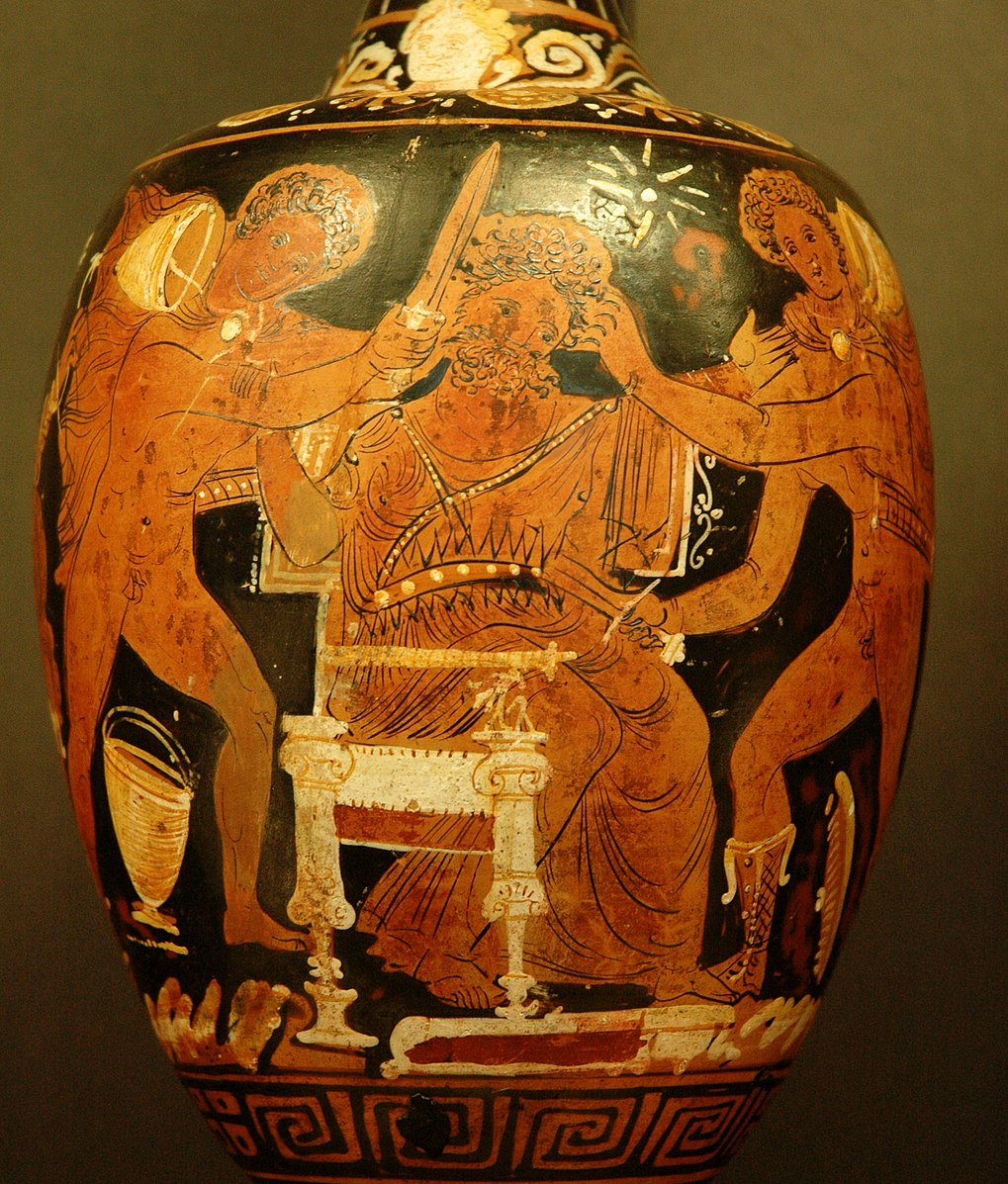LAT 4/521
November 7, 2023
.jpg)
Creative Project: due Tuesday, November 21
Seneca the Tragedian
- MSS: 9 tragedies in E MS (11th century), 10 in A family of MSS (13th century); 8 agreed to be Senecan (Hercules Furens, Troades, Phoenissae, Medea, Phaedra, Oedipus, Agamemnon, Thyestes); undateable (none definitely in Nero's reign; Caligula's, Claudius'?)
- main themes: behaviorial excess, (criminal) psychology, esp. anger (ira); the irrational (desire, lust, domination, self-destruction, monomaniacal obsession, insanity); Stoicism?
- tragedies based on Greek myths & sources (esp. iambic trimeter dialogue, chorus, stichomythia), highly Romanized and idiosyncratically Senecan compositions & spectacles (highly metatheatrical, e.g. Med. 910 Medea nunc sum; cf. Thy. 3 Tantalo, 13 in quod malum transcribor?)
- influence of prior Roman tragedians:
Ennius (239-169 BCE)
Pacuvius
(220-130 BCE)
Accius (170-86 BCE)
Varius
(Augustan)
- performance: public theater unlikely (status; lack of scripted stage directions, etc.); recitation? private court performances?
- influence of rhetoric/declamation (controuersia/suasoria; sententiae)
- style: Senecan mix of registers, e.g. colloquial to epicisms (e.g. similes in messenger's speeches); rich imagery, irony, intensity (monologues, dialogues); Thyestes' network of images & ideas – eating, drinking, emptiness & fulness, (in)satiability, excess, division/dismemberment, transgression (esp. violation of alimentary codes)
- anxiety of influence: Augustan poets, esp. Vergil; Tarrant, p. 17 n.83, “The links between Senecan tragedy and Augustan poetry have never been systematically explored. . .” [see now C. Trinacty, Senecan Tragedy and the Reception of Augustan Poetry (Oxford 2014)]

Orestes murders Aegisthus (Apulian oinochoe, c. 430-400 BCE)
- mythical background of Thyestes: Tantalus (King of Phrygia, son of Zeus) & Pelops at banquet; Hippodamia (daughter of Oenomaus), Myrtilus, Peloponnese; Pelopidae = Atreus & Thyestes; Aerope, wife of Atreus (Atreidae); affair & contested throne of Mycenae (golden ram: Thy. 220ff.); Thyestes’ return/banquet (Seneca); Thyestes’ revenge on Atreus (post-Seneca: oracle and Aegisthus, son of Thyestes & daughter Pelopia > Clytaemnestra & Agamemnon, Orestes (Electra)> Aeschylus' Oresteia)
- Roman predecessors of Thyestes (fragments; after lost Sophocles' Atreus, Euripides' Thyestes, et al.):
Accius’ Atreus (ca. 135 BCE; same phase of events as Seneca's play)
fr. 203-4 R (Atreus on kingship)
. . .oderint,
dum metuant
fr. 219 R (messenger)
epularum fictor, scelerum fratris delitor
"The banquet's creator, blotter of a brother's crimes."
fr. 220-3 R
(messenger)
. . . concoquit
partem uapore flammae, ueribus in foco
lacerta tribuit.
"He cooks up part in the flame's heat, he lays out the arms on spits in the hearth."
fr. 190 W (Atreus' revelation)
natis sepulchro ipse es parens.
"You yourself, father,
are your children's tomb."
Varius’ Thyestes
Quint. Inst. 3.8.45 (Atreus speaks)
. . . iam fero infandissima,
iam facere cogor.
". . . now I endure the unspeakable, now I am forced to enact it."
Ennius' Thyestes (169 BCE; post-banquet events)
fr. 132 FRL (Thyestes curses Atreus)
ipse summis saxis fixus asperis, euisceratus,
latere pendens, saxa spargens tabo sanie et sanguine atro.
neque sepulchrum quo recipiat habeat, portum corporis,
ubi remissa humana uita corpus requiescat malis.
"He himself, transfixed on steep, rough crags, disembowelled, hanging from his side, spraying rocks with gore, filth, and dark blood. Nor may he have a tomb
to retire in, no harbor for his body, where it may find rest from pain as human life dissolves."
.jpg)
.jpg)
